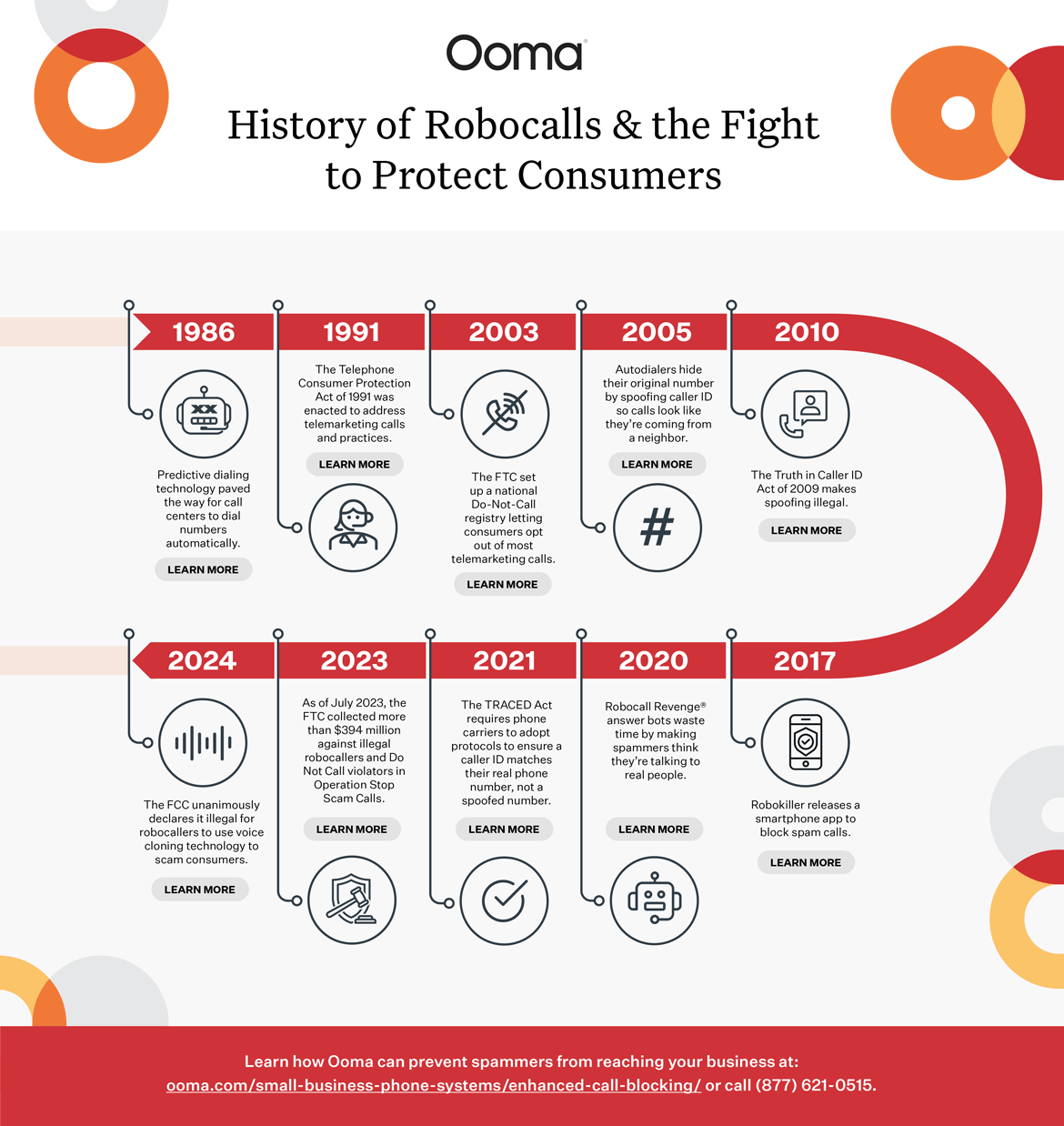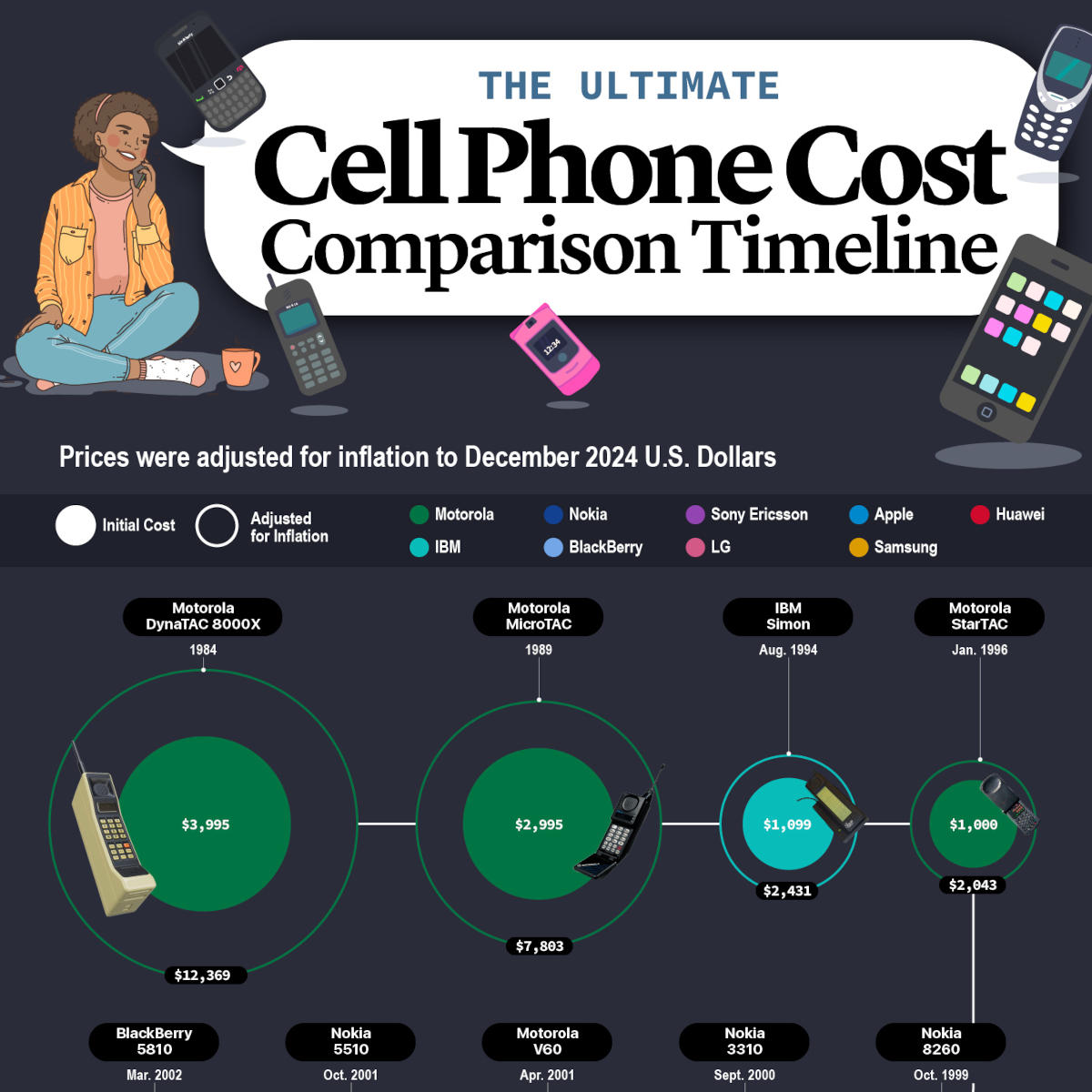3 ways to fight back against robocalls

Robocalls aren’t just bothering you, they’re a pervasive menace across the country.
The FTC received 1.2 million complaints about robocalls in 2023, with the largest category being imposter calls (that’s when someone calls you claiming to be someone else). Of the 175,000 reported imposter calls, 117,000 of them were robocalls.
Even worse, in 2023 scams that started with a phone call actually had the highest per-person loss for all scams reported in the U.S. at an average loss of $1,480. While there has been progress in the fight against spammers and robocalls, it’s clearly still a problem that needs vigilance.
The FTC continues its work against robocalls, and so do companies like Ooma, but if you’re asking what you can do to stop robocalls, there are some ways to protect yourself. Here are three you need to know.
Use technology to block robocalls
Just as robocalls are using technology to call millions of phone numbers, you can use technology to fight back. Add-on services such as Nomorobo can be applied to your phone service to stop robocalls.
However, choosing the right VoIP home phone means that you’ll have built-in call blocking technology. With the optional Ooma Home Phone Premier service, users have access to five categories of call blocking to customize settings based on preferences.
Call Blocking options with Ooma:
1. Blocking suspected spammers: Pulling from the Nomorobo database, this option blocks more than 834,000 confirmed telemarketers, robocallers, and phone spammers.
2. Blocking known spammers: This list is proprietary to Ooma and aims to block known spammers that have been identified through user reports. The active participation of Ooma’s community helps keep this list strong and remove the nuisance numbers for everyone.
3. Anonymous call blocking: Because spammers may hide their phone number to get through call screening technology, Ooma gives you the option to block incoming calls from hidden numbers.
4. Custom call blocking: Build a customized blocked call list that has phone numbers you don’t want to hear from. You can add and remove names and numbers whenever you’d like.
5. Contacts-only calling: This option lets you lock down your phone so that you only receive calls from your contact list.
In your phone settings, you can choose how each category handles calls with options including: send to voicemail, ring continuously, block completely, play a message that your number has been disconnected, or ring through to your phone as normal.
One Ooma customer wrote:
“Especially during this election time, we have been inundated with robocalls. Thank God that I can block them instantaneously with my Ooma app. Happy customer for over 6 years.”
Keep in mind that some phone companies may charge you separately for call blocking tools, but with Ooma, it’s easy to block robocalls since it’s included for all Ooma Premier subscribers.
Never let them know you’re a human.
When the robocall asks you to press a number to be removed from a call list, that too is part of the scam.
By interacting with the robocall, you’re letting the system know that your phone number is an active line. This will, in turn, make you a prime target for even more telemarketers and spammers. “Either just let it go through to voicemail or hang up immediately if you mistakenly picked up,” advises The Verge.
Protect yourself with healthy skepticism
As NPR explains, robocalls “aren’t just annoying, they’re potentially dangerous. These automated phone calls can put you at risk of falling for scams that can have devastating financial consequences.” While it’s easy to think that you wouldn’t fall for a scam, the malicious parties are using increasingly sophisticated techniques to con you.
For example, scammers may use publicly available information to make you think it’s your bank calling you. They might make it seem as though the incoming call is from a local hospital. They might even use AI to impersonate your loved ones. There are countless ways for them to prey upon unsuspecting people, and all you did was answer the phone when it rang.
Be skeptical about a caller’s true identity and motives. This applies to both you and to elderly family members who are more frequently targeted. If a call is from a legit business, they won’t mind if you hang up and call back using the phone number you have from your statements or other official paperwork.
If you feel bad hanging up on someone, you could always just let the phone ring. If the message is important, people will usually leave a message or send a follow-up text. That way, you can wait and call them back knowing they’re real.
So, how do you stop robocalls? As we’ve discussed, you can do it multiple ways, from using technology to practicing skepticism. Best of all? You’re better informed for the long-standing battle against scammers and can help your friends and family do the same.
Learn about the advanced calling features of Ooma home phone service.

History of Robocalls & the Fight to Protect Consumers
1986: Predictive dialing technology paved the way for call centers to dial numbers automatically. Learn More
1991: The Telephone Consumer Protection Act of 1991 was enacted to address telemarketing calls and practices. Learn More
2003: The FTC setup a national Do-Not-Call registry letting consumers optout of most telemarketing calls. Learn More
2005: Autodialers hide their original number by spoofing caller ID so calls look like they’re coming from a neighbor. Learn More
2010: The Truth in Caller ID Act of 2009 makes spoofing illegal. Learn More
2017: Robokiller releases a smartphone app to block spam calls.Learn More
2020: Robocall Revenge® answer bots waste time by making spammers think they’re talking to real people. Learn More
2021: The TRACED Act requires phone carriers to adopt protocols to ensure a caller ID matches their real phone number, not a spoofed number. Learn More
2023: As of July 2023, the FTC collected more than $394 million against illegal robocallers and Do Not Call violators in Operation Stop Scam Calls. Learn More
2024: The FCC unanimously declares it illegal for robocallers to use voice cloning technology to scam consumers. Learn More



